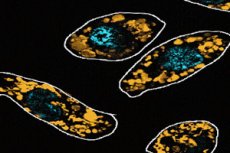Scientists have described the mechanism of onset of systemic lupus erythematosus
Last reviewed: 07.06.2024

All iLive content is medically reviewed or fact checked to ensure as much factual accuracy as possible.
We have strict sourcing guidelines and only link to reputable media sites, academic research institutions and, whenever possible, medically peer reviewed studies. Note that the numbers in parentheses ([1], [2], etc.) are clickable links to these studies.
If you feel that any of our content is inaccurate, out-of-date, or otherwise questionable, please select it and press Ctrl + Enter.

Autoimmune reaction in lupus is triggered against the background of an excessive number of immune receptors, obliged to control the absence of viruses in cells.
Systemic lupus erythematosus is an autoimmune pathology with a rich clinical symptomatology. The most common symptoms are typical facial rashes, joint pain, neuropathies, circulatory disorders in the extremities, cardiovascular disorders, etc. The clinical picture of the disease is described in detail in various scientific works, which cannot be said about the causes and pathogenesis.
In fact, the common cause is known: the immune system attacks the body's own structures, mistaking them for foreign ones. But why does this happen? Scientists still can not name clear reasons. It is assumed that viral or microbial contamination, radioactive radiation, etc. Contribute to the development of pathology.
Immunity involves a number of different protein substances and cells connected to each other by impulse connections. To understand the mechanism of reaction development, it is important to trace and define all known connections in detail.
Representatives of the Institute of Biology and Infections together with their German colleagues tried to solve this problem. The specialists investigated the features of innate immunity, its reaction to pathogenic pathogens. It was found that innate immunity reveals a certain generalized feature characteristic of a particular viral group.
Cellular structures have a number of specific toll-like receptors that trigger an innate immunity response to the appearance of various viral DNA, RNA, or bacteria. The TLR7 receptor is sensitive to single-stranded RNA of a virus, which is localized inside the cell and signals in a certain way when a viral particle appears in the cell.
The function of receptors depends on their number in the cell. A small number of receptors may be overlooked by the virus. A large number of receptors leads to the onset of an autoimmune response. Similar studies have already been conducted on rodents, where it was confirmed that an excess of TLR7 receptors caused signs of systemic lupus erythematosus in animals.
The cell normally has mechanisms that regulate the number of receptors. However, it is possible that mutations may occur, as a result of which such mechanisms cease to work, and TLR7 begins to accumulate inside the cell with the subsequent development of an autoimmune reaction.
It is possible that this is not the only possible mechanism for the development of systemic lupus erythematosus. But in any case, the implicated proteins identified can likely be used to target drugs that can counteract mutational changes. As a result, it may be possible to "force" the proteins to more assiduously process immune receptor molecules to prevent the start of an autoimmune reaction.
Details of the study are outlined on the page of the journal Science
